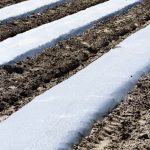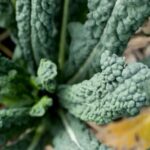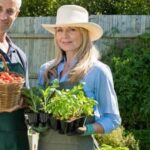Are you interested in starting a small container garden but not sure where to start? If so, you’ve come to the right place. In this article, we will explore the best vegetables for small container gardening, providing tips and suggestions for success. Whether you have limited outdoor space or simply want to enjoy the convenience of growing your own fresh produce on your balcony or patio, small container gardening can be a rewarding and enjoyable experience.
Small container gardening is a popular and practical option for urban dwellers who may not have access to traditional garden plots. By utilizing containers such as pots, planters, and even recycled items like buckets and crates, you can create a thriving vegetable garden in a limited space. Not only does this provide an opportunity to grow your favorite vegetables, but it also offers numerous benefits for both the environment and your well-being.
In this article, we will discuss the benefits of growing vegetables in small containers, as well as provide advice on choosing the right containers for small vegetable gardening. Additionally, we will explore specific types of vegetables that are particularly well-suited to container cultivation and offer tips for success in your small container garden.
Whether you’re a novice gardener looking to embark on a new hobby or an experienced green thumb seeking innovative ways to grow fresh produce, this comprehensive guide will equip you with all the information you need to get started.
Benefits of Growing Vegetables in Small Containers
Small container gardening has become increasingly popular for people with limited outdoor space. Whether you live in an apartment with a small balcony or have a tiny yard, small container gardening allows you to grow your own vegetables without the need for a large plot of land. The benefits of growing vegetables in small containers are numerous and can be enjoyed by anyone, regardless of their gardening experience.
One of the main advantages of small container gardening is its accessibility. With just a few containers, some potting soil, and seeds or seedlings, you can start your own vegetable garden. This is especially beneficial for beginners who may feel intimidated by traditional garden plots. In addition, small container gardening requires less maintenance compared to larger gardens, making it an ideal option for those with busy schedules.
Furthermore, growing vegetables in small containers also allows for more control over the growing conditions. You can easily move the containers to ensure that your plants receive optimal sunlight and protection from harsh weather conditions. This level of flexibility can result in healthier and more productive plants. Finally, small container gardening is also a great way to save money on groceries while enjoying the satisfaction of nurturing and harvesting your own produce.
| Benefits | Description |
|---|---|
| Accessibility | Allows easy access to gardening for beginners and those with limited space. |
| Maintenance | Requires less upkeep compared to traditional gardens. |
| Control | Provides more control over growing conditions such as sunlight and weather protection. |
Choosing the Right Containers for Small Vegetable Gardening
When it comes to small container gardening, choosing the right containers is crucial for the success of your vegetable garden. The type and size of containers can greatly impact the growth and health of your plants, so it’s essential to make informed decisions when selecting the containers for your small space gardening.
One of the best types of containers for small vegetable gardening is fabric pots or grow bags. These containers provide excellent aeration and drainage for the roots of your vegetables, promoting healthy growth. Additionally, they are lightweight and flexible, making them easy to move around if needed.
If you prefer a more traditional look, consider using terracotta or ceramic pots for your small container vegetable garden. These types of containers are not only aesthetically pleasing but also offer good breathability for the plants’ roots. Just be mindful that they can be heavy and may not be as portable as fabric pots.
Finally, for those looking for a budget-friendly option, recycled plastic containers such as buckets or large nursery pots can also work well for small space vegetable gardening. Just be sure to drill drainage holes in the bottom to prevent waterlogged soil, which can lead to root rot.
In summary, choosing the right containers is an important step in small container gardening. Whether you opt for fabric pots, terracotta pots, or recycled plastic containers, each type has its own advantages and considerations. Ultimately, selecting the right container will contribute to the overall success and health of your best vegetables for small container gardening.
| Container Type | Advantages |
|---|---|
| Fabric Pots/Grow Bags | Excellent aeration and drainage; Lightweight and flexible |
| Terracotta/Ceramic Pots | Aesthetically pleasing; Good breathability for plant roots |
| Recycled Plastic Containers | Budget-friendly; Ensure proper drainage by drilling holes |
Best Vegetables for Small Container Gardening
When it comes to small container gardening, tomatoes are one of the best vegetables to grow. They are versatile, delicious and can thrive in a variety of containers. Here are some reasons why tomatoes are a great choice for your small container garden:
1. Variety: Tomatoes come in a wide range of sizes, colors and flavors, making them ideal for small spaces. You can choose from cherry tomatoes, grape tomatoes, heirloom varieties and more.
2. Yield: Despite their compact size, tomato plants are prolific producers. With the right care and conditions, you can enjoy a bountiful harvest of fresh, flavorful tomatoes throughout the growing season.
3. Container Options: Tomatoes can be grown in traditional pots, hanging baskets, or even self-watering containers. This makes them adaptable to any small space, whether it’s a balcony, patio or window box.
To ensure success with your tomato plants in small containers, consider using indeterminate varieties that have been specifically bred for compact growth. Proper watering and feeding is also essential for optimal growth and fruit production. With the right care, you can enjoy a bumper crop of juicy tomatoes from your small container garden.
Best Vegetables for Small Container Gardening
Peppers are a fantastic option for small container gardening due to their compact size and ability to thrive in confined spaces. Whether you prefer sweet bell peppers, spicy chili peppers, or any other variety, growing peppers in containers can be a rewarding experience. Here are some of the best tips for successfully growing peppers in small containers:
- Choose the right container: Opt for a deep pot with good drainage to accommodate the pepper plant’s deep roots.
- Provide sufficient sunlight: Peppers require at least 6-8 hours of direct sunlight per day, so place your container in a sunny spot.
- Use well-draining soil: Fill your container with a high-quality potting mix that provides good drainage to prevent waterlogging.
One of the main benefits of growing peppers in small containers is that you can easily control their environment, including soil quality and water levels. This is particularly advantageous when dealing with pests and diseases. Additionally, container-grown peppers tend to produce earlier fruits compared to those grown in traditional garden beds.
When selecting the best vegetables for small container gardening, peppers are an excellent choice because they are not only visually appealing but also versatile in the kitchen. You can use them fresh in salads or cook them into delicious dishes such as stir-fries, fajitas, and homemade salsas.
With proper care and attention to their specific needs, peppers can thrive and yield bountiful harvests in small containers. So if you’re looking to add some spice to your small container garden, consider growing different varieties of peppers for a colorful and flavorful addition.
Best Vegetables for Small Container Gardening
When it comes to small container gardening, lettuce and salad greens are some of the best vegetables to grow. Not only are they easy to grow in containers, but they also provide a great source of nutrients and are versatile for use in various culinary dishes. Let’s explore why lettuce and salad greens are perfect for small container gardening.
Benefits of Growing Lettuce and Salad Greens in Small Containers
One of the main benefits of growing lettuce and salad greens in small containers is their compact size. These vegetables don’t require a lot of space to thrive, making them ideal for container gardening, even in limited outdoor or indoor spaces. Additionally, their relatively fast growth cycle means you can enjoy a continuous harvest throughout the growing season.
Choosing the Right Containers for Growing Lettuce and Salad Greens
When it comes to choosing containers for growing lettuce and salad greens, opt for shallow pots or wide containers that provide ample space for the plants’ shallow roots to spread out. Drainage is crucial for these vegetables, so make sure your containers have adequate drainage holes at the bottom to prevent waterlogged soil, which can lead to root rot.
Tips for Growing Lettuce and Salad Greens in Small Containers
To ensure success when growing lettuce and salad greens in small containers, be mindful of their sunlight requirements. These vegetables typically thrive in partial shade or filtered sunlight, especially during hot summer months. Additionally, regular watering is essential to keep the soil consistently moist but not waterlogged. Consider using organic fertilizers specifically formulated for leafy green vegetables to promote healthy growth and abundant yields.
Best Vegetables for Small Container Gardening
When it comes to small container gardening, growing herbs is a fantastic option that provides both practical and aesthetic benefits. Herbs are some of the best vegetables for small container gardening due to their versatility, compact size, and ability to thrive in limited spaces. Whether you have a sunny balcony, a small patio, or even just a windowsill, growing herbs in containers is an excellent way to enjoy fresh flavors and enhance your cooking.
One of the key benefits of growing herbs in small containers is their adaptability to different environments. Many herbs, such as basil, rosemary, and thyme, can thrive in various conditions and are well-suited for confined spaces. This makes them ideal for small container gardening, where space may be limited and sunlight exposure can vary.
In addition to their practical value in the kitchen, growing herbs in small containers can also be visually appealing. The lush green foliage and aromatic scents of herbs can add a touch of natural beauty to any small outdoor or indoor space. With a variety of colors, textures, and growth habits available, there is no shortage of options for creating an aesthetically pleasing herb garden in small containers.
| Herb | Best Growing Conditions |
|---|---|
| Basil | Full sun; well-drained soil |
| Rosemary | Full sun; average soil; good drainage |
| Thyme | Full sun to part shade; well-drained soil |
Best Vegetables for Small Container Gardening
Carrots and radishes are both excellent choices for small container gardening due to their compact growth habits and shallow root systems. These root vegetables thrive in containers and can be easily grown on balconies, patios, or even windowsills.
Carrots
Carrots are one of the best vegetables for small container gardening because they do not require a deep container. Choose a pot that is at least 12 inches deep with well-draining soil. Carrots prefer full sun but can tolerate some shade. Keep the soil consistently moist, especially during germination, to ensure successful carrot growth. Consider choosing smaller varieties of carrots such as ‘Thumbelina’ or ‘Paris Market’ that are perfectly suited for small spaces.
Radishes
Radishes are another excellent option for small container gardening. Like carrots, they have shallow roots and can be grown in relatively small pots. Radishes also grow quickly, making them an ideal choice for those with limited space and time. They thrive in well-draining soil and can tolerate both full sun and partial shade. Consider planting different varieties of radishes to enjoy a range of colors, shapes, and flavors in your small container garden.
Both carrots and radishes are not only easy to grow in containers but also provide a delicious and nutritious addition to your meals. With proper care and attention, you can enjoy a bountiful harvest of these root vegetables from your small container garden.
Best Vegetables for Small Container Gardening
When it comes to small container gardening, green beans and snap peas are both fantastic choices for several reasons. These vegetables are not only delicious and nutritious, but they also thrive in small containers, making them perfect for anyone with limited space. Here are some key points to consider when growing green beans and snap peas in small containers.
Container Size
When planting green beans and snap peas in small containers, it’s important to choose the right size. A container with a depth of at least 12 inches is recommended to accommodate the deep roots of these vegetables. Additionally, a container that is at least 18 inches wide will provide enough space for the plants to spread out and grow effectively.
Support
Both green beans and snap peas are vining plants that require support as they grow. In a small container, using trellises or stakes can help keep the plants upright and prevent them from sprawling over the edges of the container. This not only saves space, but also promotes better air circulation around the plants, reducing the risk of disease.
Care and Maintenance
Green beans and snap peas are relatively low maintenance vegetables, making them ideal for beginners or those with limited time for gardening. Regular watering, especially during dry spells, is important to keep the soil consistently moist but not waterlogged. Fertilizing every few weeks with a balanced fertilizer can also help promote healthy growth and abundant harvests.
Tips for Success in Small Container Gardening
When it comes to small container gardening, choosing the right vegetables to grow can make all the difference. Whether you have limited outdoor space or just want to add some greenery to your balcony or patio, growing vegetables in small containers is a great way to enjoy homegrown produce. Here are some of the best vegetables for small container gardening:
- Tomatoes: Tomatoes are a popular choice for container gardening because they can thrive in small spaces. Look for compact or determinate varieties that are well-suited for containers, such as Patio Princess or Tiny Tim.
- Peppers: Another great option for small container gardening, peppers come in a variety of colors, shapes, and heat levels. Plant varieties like Sweet Banana or Red Mini Bell in a sunny spot and watch them flourish.
- Lettuce and Salad Greens: For a continuous harvest of fresh greens, consider planting lettuce and other salad greens in shallow containers. Varieties like Mesclun Mix and Buttercrunch are perfect for small spaces.
- Herbs: Herbs like basil, rosemary, and thyme are ideal for small container gardening. They not only add flavor to your meals but also provide beautiful greenery to your outdoor space.
- Carrots and Radishes: These root vegetables can be grown in deep containers with well-draining soil. Varieties like Thumbelina carrots and French Breakfast radishes are suitable for small gardens.
- Green Beans and Snap Peas: Both green beans and snap peas thrive in containers with trellises for support. Look for bush varieties of green beans and compact varieties of snap peas for the best results.
With the right care and attention, these vegetables can thrive in small containers, providing a bountiful harvest throughout the growing season. Make sure to choose appropriate-sized pots with good drainage, use high-quality potting soil, water regularly, and provide adequate sunlight for your plants to succeed.
Conclusion
In conclusion, small container gardening offers a range of benefits and opportunities for growing and enjoying fresh vegetables right at home. With the right containers, soil, and proper care, it is possible to grow a variety of vegetables in small spaces. From tomatoes and peppers to lettuce, herbs, carrots, and radishes – there are plenty of options for those looking to start their own mini garden.
One of the best aspects of small container gardening is the convenience it provides. Whether you live in an apartment with limited outdoor space or simply want to add some greenery to your balcony or patio, container gardening allows you to make the most of your available space. Not only does it provide a source of fresh produce right at home, but it also adds a touch of natural beauty to your living environment.
Furthermore, small container gardening can be a great way to introduce children or beginners to the joys of gardening. The process of planting seeds or seedlings, watching them grow, and eventually harvesting fresh vegetables can be incredibly rewarding. Plus, by choosing the best vegetables for small container gardening such as tomatoes, peppers, lettuce, herbs, carrots, radishes, green beans and snap peas – you can enjoy a variety of flavors and nutritional benefits right from your own home garden.
Frequently Asked Questions
What Vegetables Can You Grow in Small Containers?
You can grow a variety of vegetables in small containers, including cherry tomatoes, peppers, lettuce, radishes, and herbs like basil and cilantro. These smaller plants are well-suited for container gardening and can thrive in limited space.
What Vegetables Can I Grow in a 1 Gallon Container?
In a 1 gallon container, you can successfully grow certain vegetables such as lettuce, spinach, kale, and herbs like parsley or chives. These compact plants have shallow root systems that make them ideal for smaller containers.
What Vegetables Can You Grow in a Small Space?
When working with limited space, consider growing vegetables like cherry tomatoes, peppers, beans, and compact varieties of zucchini or cucumbers. Additionally, leafy greens such as lettuce, spinach, and arugula can thrive in small spaces and even be grown indoors with sufficient light.

If you’re looking to get into vegetable gardening, or are just looking for some tips on how to make your current garden better, then you’ve come to the right place! My name is Ethel and I have been gardening for years. In this blog, I’m going to share with you some of my best tips on how to create a successful vegetable garden.





